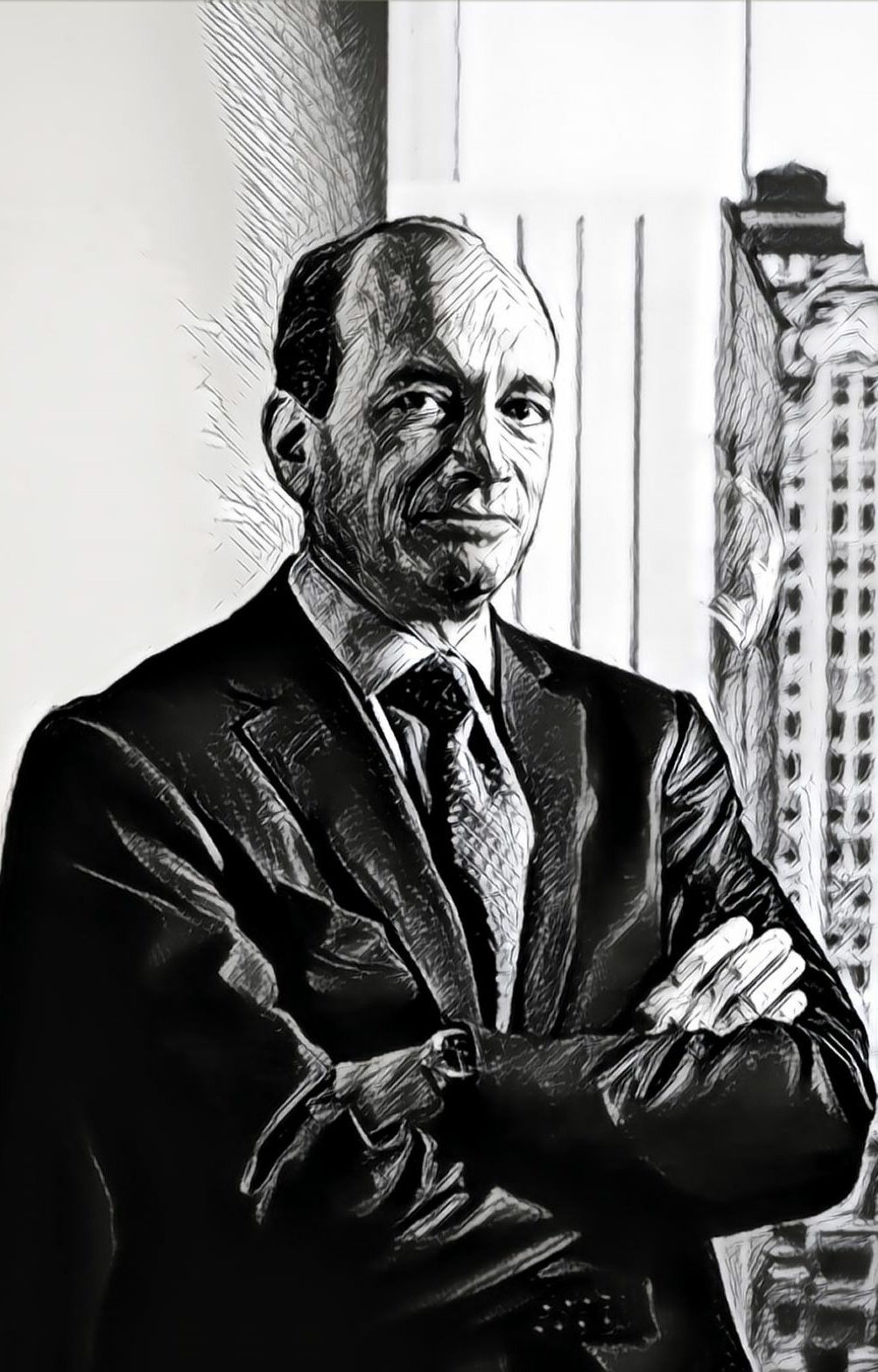Discover how a Michael Burry Book can transform your financial perspective by delving into the strategies behind the Michael Burry portfolio. What insights can you gain from his investment philosophy and how might his unconventional approach reshape your understanding of market dynamics? Time to explore the profound lessons from this financial maverick.
Table of Contents
Overview
Michael Burry is an American investor and hedge fund manager, best known for predicting and profiting from the subprime mortgage crisis of 2007-2010. He founded the hedge fund Scion Capital in 2000 and later started Scion Asset Management.
Burry's Scion Asset Management has achieved impressive returns since its inception. Over the past 10 years, the fund has delivered a 160% return, significantly outperforming the S&P 500’s 10% average return over the same period. Burry's investment philosophy is deeply rooted in value investing principles, emphasizing a margin of safety and thorough research.
Importance of Understanding Burry's Financial Perspective
Michael Burry's financial perspective is deeply rooted in value investing and rigorous research. His approach emphasizes identifying undervalued assets with significant growth potential and prioritizing a margin of safety. Burry's contrarian thinking and thorough analysis provide valuable lessons on spotting hidden opportunities in the market, while his ability to foresee and navigate financial crises underscores the importance of diligent risk assessment.
Two key advantages of Burry's perspective are his strategic insights and effective risk management. To further understand the nuances of Burry's investment perspective, let's dive into the strategies and principles that have defined his successful career:
Strategic Insights - Burry's investment strategies, which emphasize rigorous research, contrarian thinking, and value investing, provide valuable lessons on identifying undervalued assets and potential market opportunities.
Risk Management - Burry's ability to foresee and navigate financial crises, such as the 2008 subprime mortgage crisis, highlights the importance of thorough risk assessment and management in investment decisions.
Innovation - Burry's unconventional approach to investing, including his use of credit default swaps to bet against subprime mortgages, showcases innovative financial thinking that can inspire new methods and strategies in the investment world.
What insights can we gain from Michael Burry books that could transform our approach to investing? By studying Burry's perspective, investors can gain a deeper understanding of market dynamics, improve their analytical skills, and develop more effective investment strategies.
Let’s find out more about the man, here’s a synopsis of Burry’s early life, career path and key achievements:
Early Life
Michael Burry's journey is a fascinating blend of medicine and finance. Born on June 19, 1971, in San Jose, California, Burry faced early challenges when he lost his left eye to retinoblastoma at the age of two. Despite this, he excelled academically, earning a bachelor’s degree in economics from UCLA and an MD from Vanderbilt University.
Career Path
Initially pursuing a career in medicine, Burry worked as a neurology and pathology resident at Stanford University Medical Center. However, his passion for financial investing, which he pursued as a hobby during his night shifts, eventually led him to leave medicine and start his own hedge fund, Scion Capital, in 2002
Key Achievements
Burry's investment style, deeply rooted in value investing principles, quickly gained recognition. By the end of 2004, Scion Capital was managing around $600 million in assets. His most notable achievement came in 2005 when he predicted the subprime mortgage crisis.
Michael Burry made a personal profit of $100 million from predicting and profiting from the subprime mortgage crisis. The Scion Capital investors gained approximately $725 million, bringing the total profit to $825 million, as they enjoyed a 50% annualized rate of return (ROR).
Burry's contributions to the financial world extend beyond his successful predictions. His contrarian approach and focus on identifying undervalued assets have influenced many investors. Despite facing skepticism and challenges, Burry's determination and insight have left a lasting impact on the investment community.
What books do Dr. Burry find essential to understanding and implementing his contrarian strategy?
Burry’s Book Selection and Insight Importance
Michael Burry's curated book selection offers a deep dive into the principles that have shaped his renowned investment strategy. These books are not just important reads; they are foundational pillars that provide profound insights into value investing, rigorous research, and risk management.
Through these pages, Burry's philosophy comes to life, revealing the meticulous thought process and contrarian approach that led him to predict and profit from the subprime mortgage crisis. By delving into these works, investors can gain invaluable knowledge and perspective, equipping themselves with the tools to navigate the complexities of the markets. How has a Michael Burry Book influenced your investing approach?
Let's explore why these books hold such significance in Burry's journey and how they can transform your own financial perspective. Here are a few Burry book recommendations, along with brief descriptions and why they reflect his investment strategy:
- The Intelligent Investor by Benjamin Graham - This classic book on value investing emphasizes the importance of thorough research and a margin of safety, principles that Burry strictly adheres to in his investment approach.
- Common Stocks and Uncommon Profits by Philip A. Fisher - Fisher's focus on identifying high-quality companies with strong growth potential aligns with Burry's strategy of seeking undervalued assets with significant upside.
- Security Analysis by Benjamin Graham and David L. Dodd - This comprehensive guide to analyzing securities highlights the importance of rigorous research and risk management, key components of Burry's investment philosophy.
- Atlas Shrugged by Ayn Rand - While not a financial book, Rand's emphasis on individualism and rational self-interest resonates with Burry's contrarian and independent thinking.
- Guns, Germs, and Steel by Jared Diamond - This book explores how environmental and geographic factors shape societies, reflecting Burry's belief in understanding broader market dynamics and external influences on investments.
- Against the Gods: The Remarkable Story of Risk by Peter L. Bernstein - Bernstein's examination of risk and its role in financial markets aligns with Burry's focus on risk management and his ability to foresee and navigate financial crises.
What lessons can we learn from a Michael Burry Book? Burry’s selection collectively embodies his investment strategy, emphasizing value investing, thorough research, risk management, and contrarian thinking. How can Michael Burry's changing financial perspective be applied to real-life personal finance strategies to enhance risk management and uncover undervalued opportunities?
Changing Financial Perspectives
Michael Burry's insights possess the transformative power to fundamentally alter traditional financial thinking. By challenging conventional investment norms, Burry emphasizes the critical importance of rigorous research, contrarian strategies, and meticulous risk management. His approach encourages investors to delve deeper, moving beyond surface-level information to uncover undervalued assets with significant growth potential. This shift in perspective can lead to more informed and resilient investment decisions, ultimately fostering long-term financial success and stability.
How Burry’s Insights Can Alter Traditional Financial Thinking
Burry’s focus on in-depth analysis and value investing pushes investors to look beyond market trends and hype. By seeking out opportunities that others might overlook, investors can find assets that offer substantial returns with lower risk. This contrarian approach helps to mitigate the impact of market volatility and provides a stable foundation for investment strategies.
Real-Life Applications of Burry’s Strategies in Personal Finance
Burry's strategies can be applied to personal finance by adopting a value investing mindset, prioritizing a margin of safety, and thoroughly researching investment opportunities. Individuals can build robust investment portfolios by focusing on high-quality, undervalued assets that have the potential for significant growth.
Burry's emphasis on risk management highlights the importance of diversifying investments and being prepared for market downturns.
By embracing Michael Burry's unique financial perspective, investors can gain a deeper understanding of market dynamics, improve their analytical skills, and develop more effective strategies for achieving their financial goals.
This transformation in thinking can lead to more resilient investment portfolios and greater long-term financial success. Below, you’ll find real-world application examples of the Burry investment implementation:
Case Examples
Value Investing in Tech Stocks
Example - During the early 2000s tech bubble burst, an investor applied principles from Benjamin Graham’s "The Intelligent Investor," recommended by Michael Burry. By focusing on tech companies with strong fundamentals, cash reserves, and a margin of safety, the investor identified undervalued opportunities such as Apple and Microsoft. Despite the overall market downturn, these investments yielded substantial returns as these companies eventually rebounded and continued to grow.
Impact - This application of value investing principles showcases how thorough research and focusing on intrinsic value can lead to significant gains, even in volatile markets.
Contrarian Approach in Retail
Example - Following Burry’s contrarian investment strategies from Philip A. Fisher’s "Common Stocks and Uncommon Profits," another investor identified out-of-favor retail stocks during a market downturn. Despite initial skepticism, the investor's deep dive into financial statements, management quality, and long-term potential led to the acquisition of shares in companies like Target and Costco. Over time, these stocks rebounded and outperformed market expectations, resulting in substantial profits.
Impact - This case highlights the power of contrarian thinking and the importance of thorough research. By going against market trends and focusing on undervalued opportunities, investors can achieve significant returns.
Testimonials from Readers Influenced by Burry’s Work
Understanding the impact of Michael Burry's insights can be greatly enhanced through testimonials from readers who have applied his principles. These testimonials highlight the transformative power of his strategies, offering valuable lessons in both personal and professional risk management. Readers have found Burry's investment philosophy to be immensely helpful in navigating financial markets, making informed decisions, and managing risks effectively. Whether it's improving personal finance strategies or enhancing professional financial analysis, the real-world applications of Burry's insights have provided readers with a deeper understanding and greater confidence in their financial endeavors. Here are the testimonials and the reader impact:
Personal Finance Transformation
Testimonial - "Reading Michael Burry's recommendations, especially 'The Intelligent Investor,' completely changed my approach to personal finance. I now prioritize thorough research and value investing, which has led to more stable and profitable investments."
Impact - This testimonial emphasizes the practical impact of adopting value investing principles in personal finance, leading to more informed and resilient investment decisions.
Professional Growth
Testimonial - "Burry's insights from 'Security Analysis' have been invaluable in my career as a financial analyst. His emphasis on risk management and detailed financial analysis has helped me make more informed and strategic decisions."
Impact - This testimonial highlights how Burry’s recommended books can enhance professional skills, particularly in financial analysis and risk management, leading to better strategic decision-making.
These examples illustrate the real-world applications and transformative impact of the principles from Burry's recommended books. By embracing these strategies, investors can significantly improve their financial outcomes and achieve long-term success.
No investment strategy is perfect and Burry’s risk-averse, contrarian approach is no exception. What are the strategy’s criticisms and limitations?
Overview of Criticisms Against Burry’s Views and Strategies
While Michael Burry's investment strategies have earned him acclaim and substantial profits, they are not without their critics. Some argue that his contrarian approach and intensive research methods can be overly pessimistic and time-consuming.
In this section, we'll explore the various criticisms and limitations of Burry's investment strategy and examine how they impact both professional and personal finance contexts:
Michael Burry's investment strategies have faced criticism for several reasons. Critics argue that his contrarian approach can be overly pessimistic, leading to missed opportunities in bull markets. Burry’s focus on value investing and thorough research can be time-consuming and may not always yield immediate results, which can be frustrating for investors seeking quick gains.
Burry's vocal criticism of passive investing and index funds has also sparked debates, with some arguing that his views are overly cautious and fail to recognize the benefits of diversified, low-cost investment options.
Possible Limitations When Applying His Methods to Personal Finances
Applying Burry's methods to personal finances is effective and challenging. First, the level of detailed research and analysis required for value investing may be difficult for individual investors to achieve without significant time and resources.
Burry's contrarian approach may not align with the risk tolerance of all investors, particularly those who prefer a more conservative investment strategy. Finally, the focus on undervalued assets may limit exposure to high-growth opportunities, potentially resulting in lower overall returns.
Despite these criticisms and limitations, Burry's principles of thorough research, risk management, and contrarian thinking can still provide valuable insights for personal finance, especially for those willing to invest the necessary time and effort.
While there are criticisms and limitations, such as the challenges of applying Burry's methods to personal finance and the potential for missed high-growth opportunities, the advantages far outweigh them. Burry's financial insights challenge conventional thinking, encourage innovation, and ultimately lead to more informed and resilient investment strategies. Through his profound influence, Burry continues to inspire investors to think differently and achieve greater financial empowerment.
How do the Michael Burry Book strategies align with your contrarian thinking?
Read Next:








